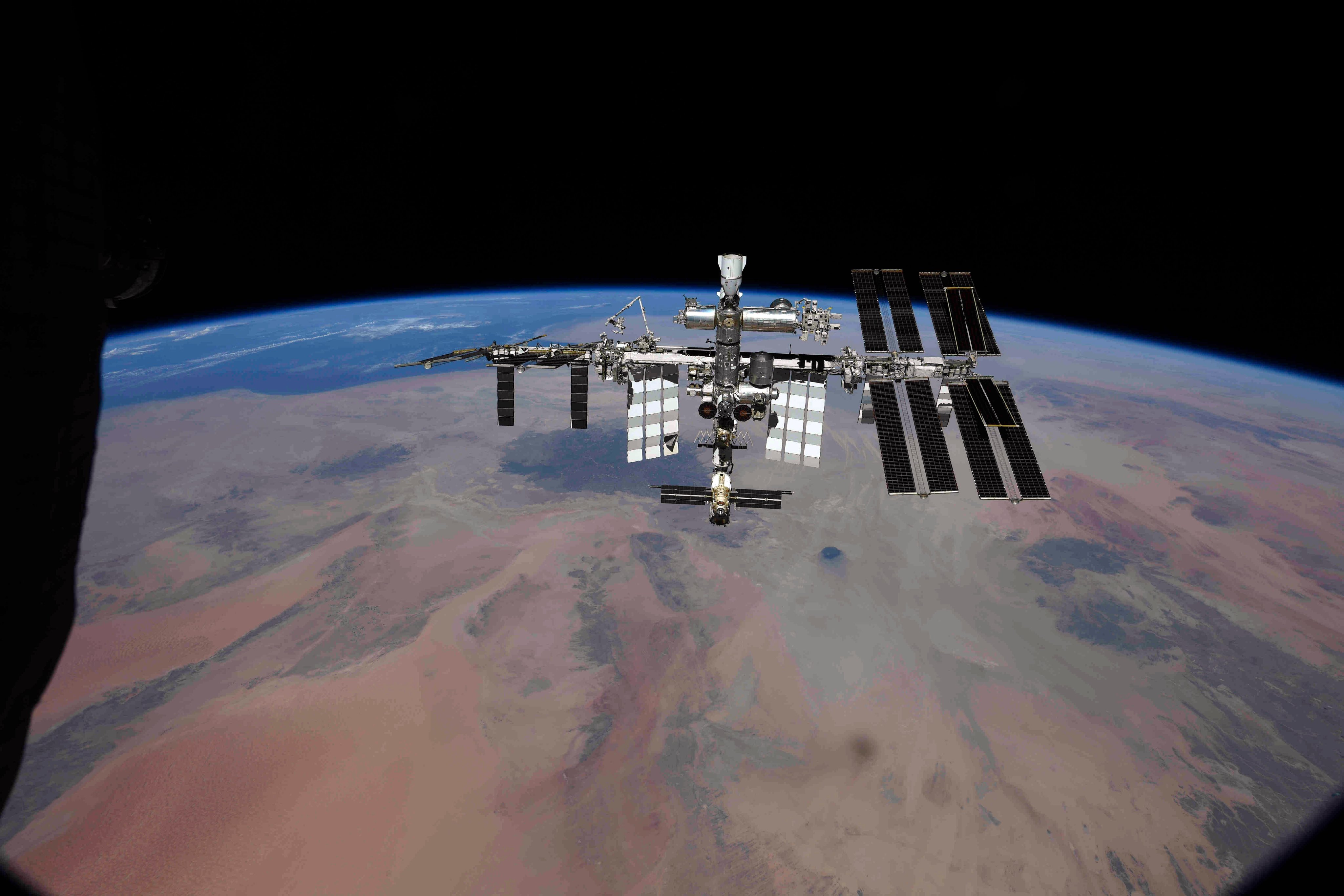Estée Lauder teams up with International Space Station to tackle Earth's plastic problem

Research in space could help humanity to tackle our big plastic problem here on Earth.
The global beauty brand Estée Lauder has partnered with the International Space Station to combat Earth's plastic issues with the ISS National Lab Sustainability Challenge: Beyond Plastics. The challenge, funded and supported in part by Estée Lauder, was announced today (Oct. 28) by the Center for the Advancement of Science in Space, Inc. (CASIS).
"We're very excited about this opportunity to partner with Estée Lauder and contribute in some meaningful way to tackling some of the big societal issues," Ryan Reeves, the ISS National Lab program director of advanced materials, told Space.com. "We know that this isn't going to be the solution; we just want to be able to contribute part of the solution."
Related: The top 10 views of Earth from space
Plastic production has increased exponentially over the last century. Every single year, 8 million tons of plastic waste ends up in our oceans, according to National Geographic. This is just the tip of the iceberg when it comes to humanity's overflowing plastic problem. But scientists think that experiments aboard the orbiting lab may give us some ideas that could help.
"Plastic waste has been an issue for decades now. For the most part, as a society, we've tried to combat that with mechanical recycling, and largely to a limited degree of success," Reeves said. He added that there are only a limited variety of plastics recycled and, even then, it's very ineffective against the massive problem.
"The problem is only getting worse, and it's going to require some new innovative solutions," Reeves said.
Breaking space news, the latest updates on rocket launches, skywatching events and more!
The Sustainability Challenge from the ISS National Lab is an open invitation for U.S. entities to design and propose projects and experiments for the space station that could specifically combat the plastic problem or other environmental issues, according to a statement from the ISS National Lab.
This initiative aims to "develop, test or mature products and processes" that work toward at least one of three goals, according to the same statement. These goals include:
- Reducing the amount of plastic waste put into the environment
- Coming up with alternative ways to create polymers like plastics
- Reducing the amount of new plastic created
So how exactly might experiments in space take on such big Earth issues? Reeves shared a few ways that the projects planned as part of this challenge will aim to tackle plastic.
"One example of how we could potentially make an impact when we're talking about microgravity is in the area of biopolymer production," Reeves said. Biopolymers are polymers that are created by living organisms, and they typically break down much more easily and quickly than traditional synthetic polymers do. Biopolymers commonly used already on Earth include things like silk and cellulose, which is produced by plants.
"Microgravity has shown to have significant impacts on microorganisms and their metabolic activity. So somebody could come along and harness that ability to produce biopolymers or chemical intermediates" in space, Reeves said. He added that studies have already shown that microorganisms have higher metabolic activity without gravity, suggesting that biopolymers could be produced efficiently in space.
How could such work be scaled to have a real impact here on Earth? Reeves shared that, since gene expression is changed in microorganisms exposed to a space environment, those changes are retained when they return to Earth. And so, "even if you bring those organisms back down … they still exhibit a different behavior, so you could essentially program them, for lack of a better word, up there, bring them back down and then do all the manufacturing down here on Earth."
That is just one potential pathway for the various experiments and projects that could arise as part of this collaboration.
"It's likely going to take a lot of different technologies all coming together, and so this is just part of that," Reeves said. "We're excited … We can't wait to see how people can innovate and come up with some new ideas."
Email Chelsea Gohd at cgohd@space.com or follow her on Twitter @chelsea_gohd. Follow us on Twitter @Spacedotcom and on Facebook.

Chelsea “Foxanne” Gohd joined Space.com in 2018 and is now a Senior Writer, writing about everything from climate change to planetary science and human spaceflight in both articles and on-camera in videos. With a degree in Public Health and biological sciences, Chelsea has written and worked for institutions including the American Museum of Natural History, Scientific American, Discover Magazine Blog, Astronomy Magazine and Live Science. When not writing, editing or filming something space-y, Chelsea "Foxanne" Gohd is writing music and performing as Foxanne, even launching a song to space in 2021 with Inspiration4. You can follow her on Twitter @chelsea_gohd and @foxannemusic.

